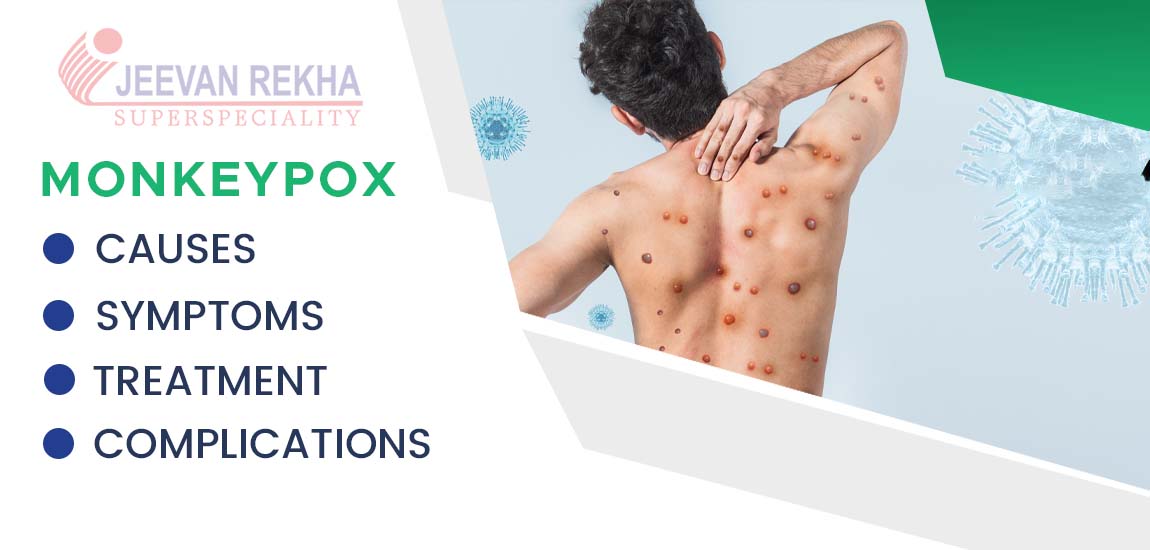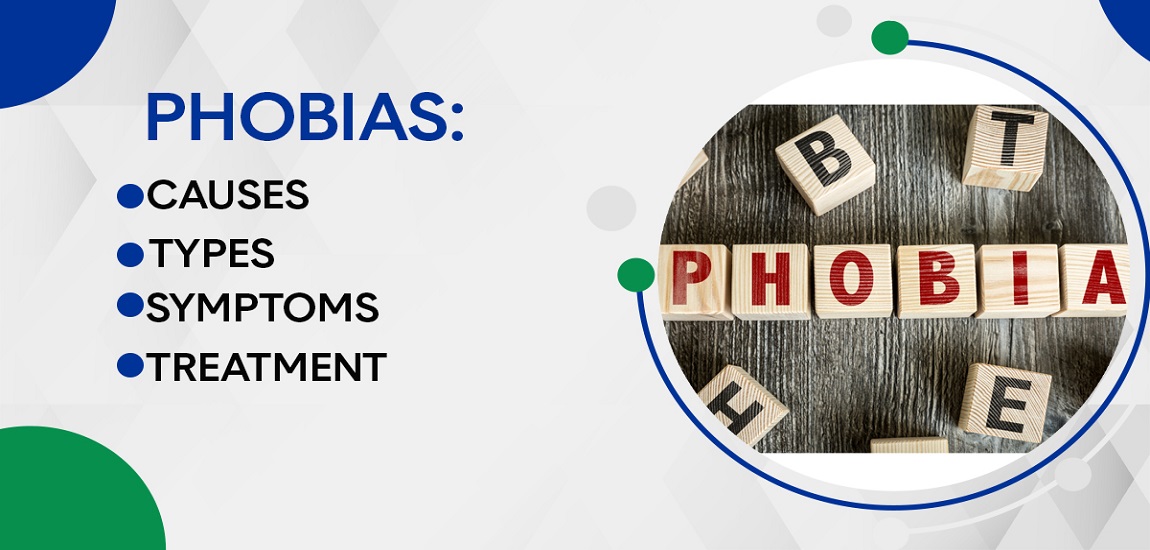
- By JRSH Admin
- In Health and Tips,
- Posted December 19, 2022
Monkeypox: Symptoms, Causes, Complications, and Treatment
Many countries have reported monkeypox cases this month (May 2022). European and North American populations are rapidly being infected with the virus. During the first week of May, the UK reported 20 cases of the rare virus.
The WHO has received reports of monkeypox cases from 12 countries that are not endemic for the virus since 13 May 2022.
Monkeypox was the subject of an emergency meeting on Monkeypox held by the World Health Organization (WHO) to discuss its transmission and vaccines.
What is Monkeypox?
Monkeypox disease is caused by the monkeypox virus. There is a rash and flu-like symptoms associated with it. It belongs to the orthopoxvirus family, like the better-known virus that causes smallpox.
The monkeypox disease was first discovered in 1958 after two outbreaks occurred in research monkeys. Humans and rodents are the main sources of transmission, but it can sometimes be spread via skin-to-skin contact as well. The monkeypox virus has two known types (clades) - one that comes from Central Africa and one that comes from West Africa.
Causes of Monkeypox:
Poxviridae is a family of viruses characterized by double-stranded DNA, which causes monkeypox. The CDC reports that the virus is closely related to other 'pox' viruses, including:
- Vaccinia (used for smallpox vaccine)
- Variola major and minor (that cause smallpox)
- Cowpox virus
The virus was first discovered in captive monkeys and is primarily found in tropical rainforest areas of West and Central Africa. The virus has two subtypes that correspond to the two geographical regions: the Congo Basin and West African clades.
The virus was discovered in monkeys, African squirrels, Gambian pouched rats, and humans. The consumption of these animals as food may be a significant source of transmission to people.
Symptoms of Monkeypox:
Monkeypox symptoms resemble smallpox signs and symptoms. Monkeypox usually has milder symptoms.
It usually takes between 6 and 13 days after monkeypox virus infection for symptoms to manifestTrusted Source. But it can be anywhere between five and twenty-one days.
The early symptoms can include:
- The most common is a fever.
- Headache
- Backache
- Fatigue
- Muscle pain
- Chills
- An enlarged lymph node is known as lymphadenopathy
A rash typically develops one to three days after the fever does. Usually, the rash appears on your:
- the most frequent site is the face
- the surface of your hands
- your feet's bottoms
- mouth
- genitalia
- conjunctiva and cornea of the eyes
The appearance of a rash can precede or follow fever and other flu-like symptoms. Some individuals might only get a rash. Lesions that develop in the following order make up the rash brought on by monkeypox:
- macules, or flat, discolored lesions
- papules, or marginally elevated lesions
- bumps or vesicles filled with a clear fluid
- bumps or pustules with a yellowish fluid
- scabs
Lesions fall off after they have healed and developed a scab. Monkeypox symptoms typically last 2 to 4 weeks and go away on their own without medical intervention.
Complications of Monkeypox:
Monkeypox can result in secondary infections such as sepsis, bronchopneumonia, encephalitis, and corneal diseases that can lead to blindness. Birth defects or stillbirths may happen if an infection occurs during pregnancy.
People who were vaccinated against smallpox as children may experience milder diseases. Recall that there is currently no vaccine against smallpox or monkeypox that is safe to use while pregnant.
Risk Factors of Monkeypox:
Monkeypox is a rare viral infection. The risk factors include:
- Risk factors include animal bites and scratches from infected animals (most commonly African rodents or monkeys) or other rodents that have come into contact with infected African animals.
- People shouldn't eat any meat from these animals.
- Physical contact right up close with the diseased person.
- Due to the spread of the infection in these social networks and circles, gay, bisexual, and other men who have sex with men are currently at a higher risk of contracting the disease. However, anyone can contract monkeypox. Heterosexual sex is just one type of close or direct physical contact that can spread through.
Prevention of monkeypox:
A person, animal, or piece of equipment can spread the virus. You can stop the spread of the disease by following the following advice.
- Avoid coming into direct contact with bodily fluids like skin lesions or respiratory secretions.
- Do not engage in prolonged face-to-face contact, kissing, cuddling, or sexual activity.
- Avoid touching sick or dead animals when in areas where monkeypox is a problem.
- Affected individuals must be kept isolated.
- Hands should be washed regularly with soap and water.
- Thoroughly cook animal meat.
- When caring for a patient who has monkeypox, put on a PPE kit (Personal Protective Equipment).
How does monkeypox spread?
Close contact with an animal or human who has the disease, as well as contact with contaminated objects, are the two main ways to contract monkeypox.
Person-to-person spread:
An infected person can spread monkeypox to another by:
- inhaling or getting infected droplets from coughs or sneezes that end up in the mouth, nose, or eyes (extended close contact is usually required)
- physical interaction, such as touching, kissing, or sexual contact, with infected bodily fluids, scabs, or blisters
- utilizing contaminated bedding, towels, or clothing
Animal-to-person spread:
Animal-to-human transmission was previously uncommon outside of Africa and typically began when an infected animal was imported and infected local animals. Some wild animals in Africa, including rodents like rats or squirrels, may carry the monkeypox virus.
Monkeypox can be contracted by animals and transmitted to humans by:
- bites and scratches
- contact with contaminated blood, fluids, the animal's skin, or its bedding
- consuming or cooking meat from a diseased animal
Diagnosis of monkeypox:
Due to the rarity of the condition, your doctor may initially suspect measles, chickenpox, small, pox, or another rash-causing illness. The main feature that sets Monkeypox apart from other poxes, though, is swollen lymph nodes (lymphadenopathy).
A tissue sample from an infected person's open lesion (sore) is taken by the healthcare professional to diagnose monkeypox, and it is safely transported (following national and international requirements) to a laboratory with the necessary tools.
The most preferred laboratory test is the polymerase chain reaction (PCR), due to its sensitivity and accuracy. The affected person may then be asked to provide a blood sample so that the monkeypox virus or antibodies that their immune system produces can be detected.
Treatment of Monkeypox:
Following are the basic treatments included in the treatment of monkeypox.
1. Patient isolation
- Patients must remain segregated in a different room until all lesions have healed and the scabs have fallen off.
- The patient needs to put on a three-layer mask.
- It is recommended that the patient wears long pants and full-sleeve shirts to prevent skin lesions from contacting and spreading to other parts of the body.
2. Protection of skin lesions
It is important to determine where skin lesions are located before managing them.
- Skin rash: It might be necessary for your doctor to clean and cover your lesion with an antiseptic if the lesion is severe. Touching or scratching those lesions is not recommended. Antibiotics may be prescribed by your doctor depending on the severity of the infection.
- Oral ulcers: Medications such as topical anti-inflammatory medications and warm saline gargles may be recommended by your doctor to relieve pain and inflammation and speed up recovery.
- Conjunctivitis: Conjunctivitis/reddening of the eyes generally heals on its own. However, if you have vision problems or symptoms that persist for a long period, you should consult a doctor.
3. Nutritional support and rehydration
Dehydration can happen when a person cannot eat because of a general feeling of being unwell, a fever, a headache, or other symptoms. Your doctor might advise drinking more water and using an oral rehydration solution (ORS). In addition, you should try eating wholesome foods to promote a speedy recovery.
4. Symptomatic treatment
- Fever: To reduce body temperature, a lukewarm sponge bath and paracetamol are recommended.
- Itchy skin: To treat itchy skin and reduce redness, your doctor may advise using topical lotions and antihistamines.
- Vomiting and nausea: To stop the vomiting, your doctor may recommend antiemetic medications.
- Headaches/other aches: Paracetamol provides pain relief for headaches and other aches and pains.
Tags
Blog Search
Latest Posts
-
बर्ड फ्लू के लक्षण, कारण, उपचार और बचाव के उपाय जानें
December 04, 2025 -
Best Diet Plan for Menopause Weight Management
November 25, 2025 -
Pulmonary Fibrosis Treatment: Understanding Lung Scarring and Breathing Problems
November 21, 2025 -
Arrhythmia: Types, Causes, Symptoms, and Treatment
November 07, 2025 -
Silent Heart Attack: Causes, Symptoms and Treatment
October 24, 2025




